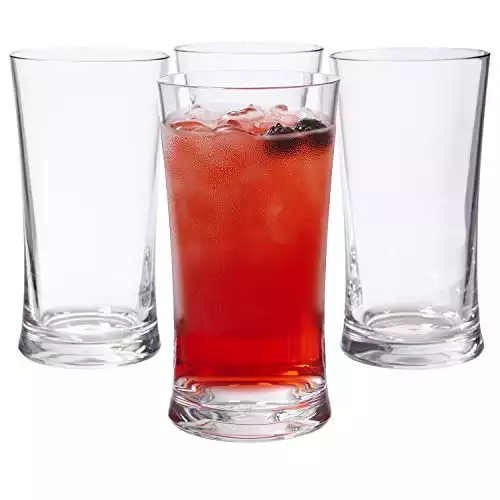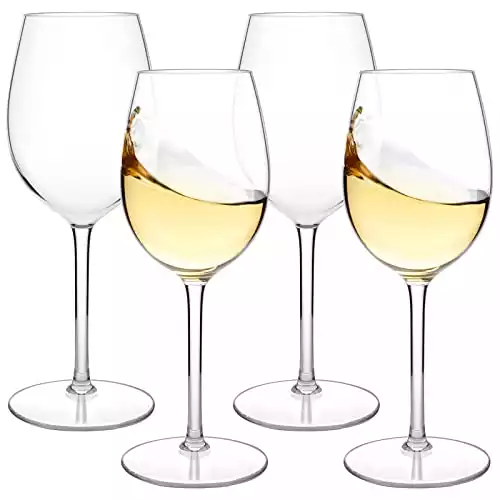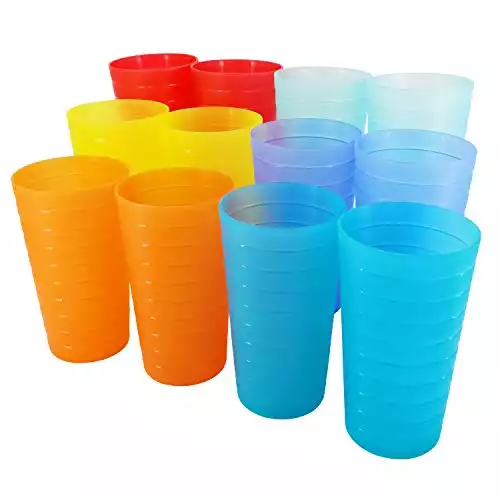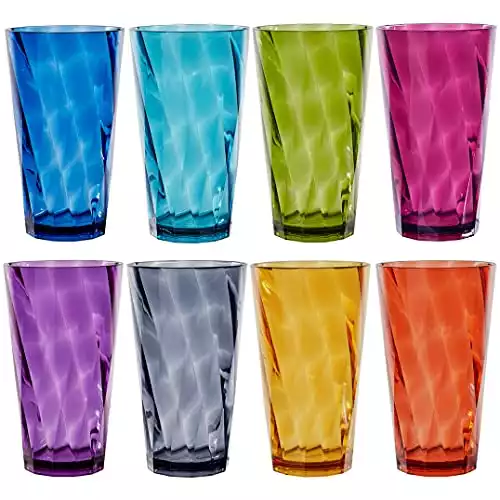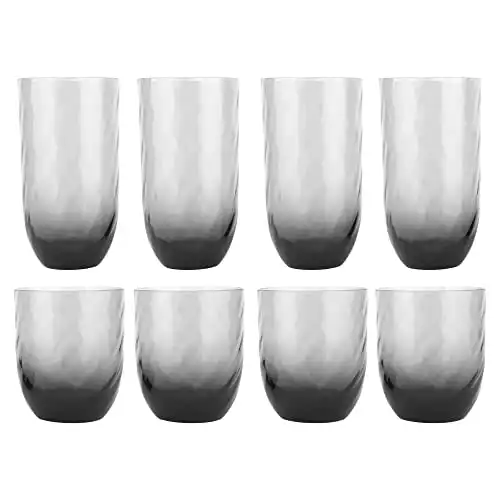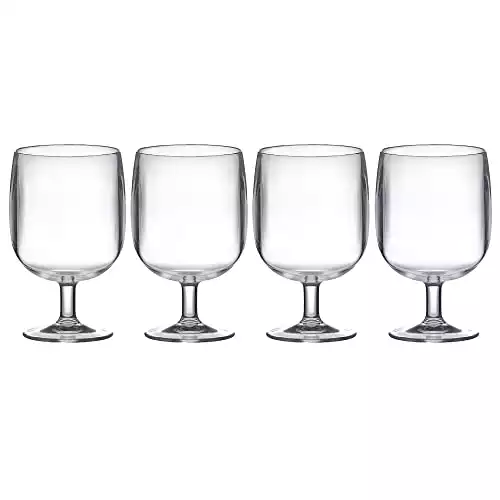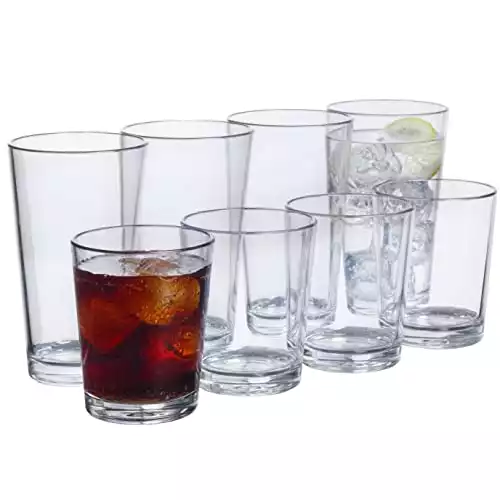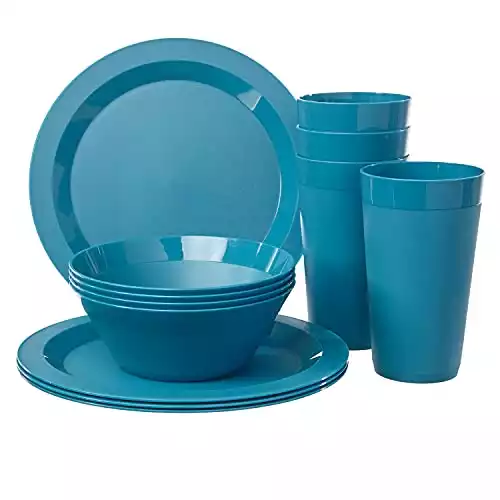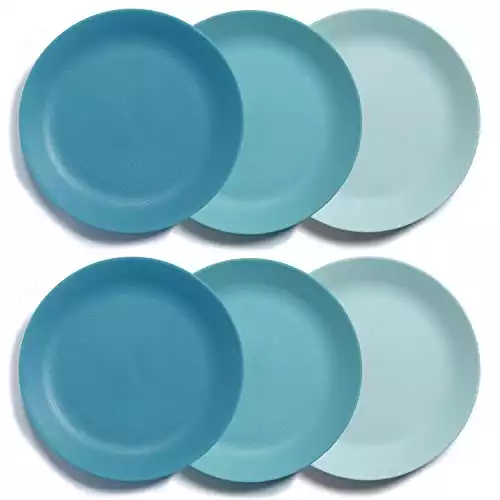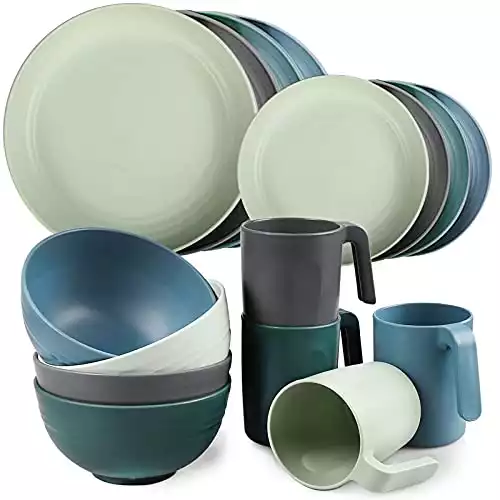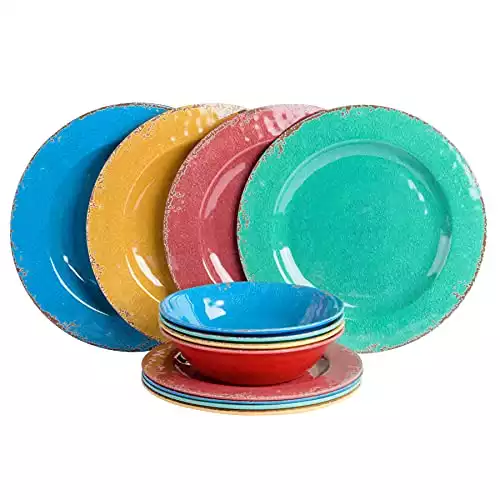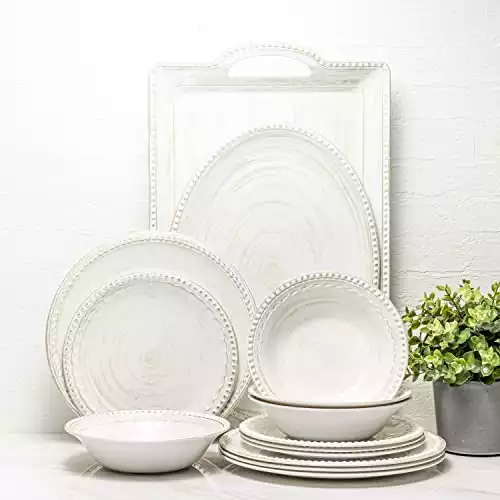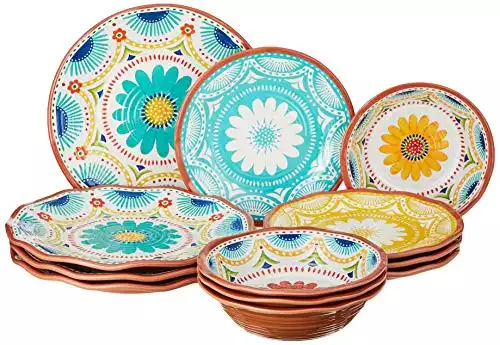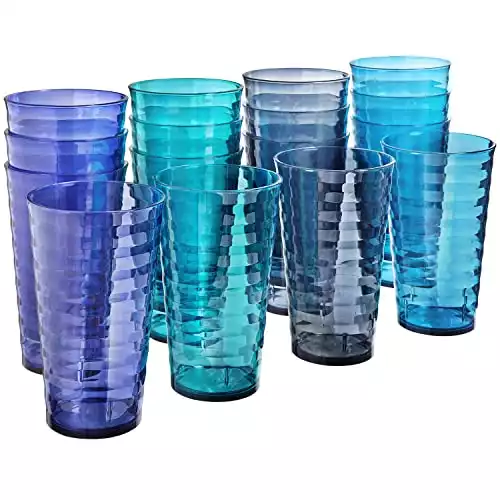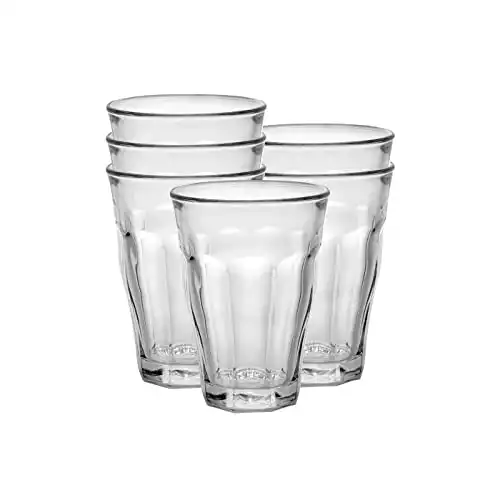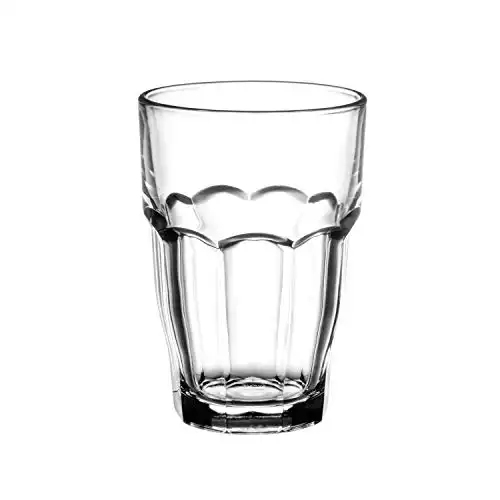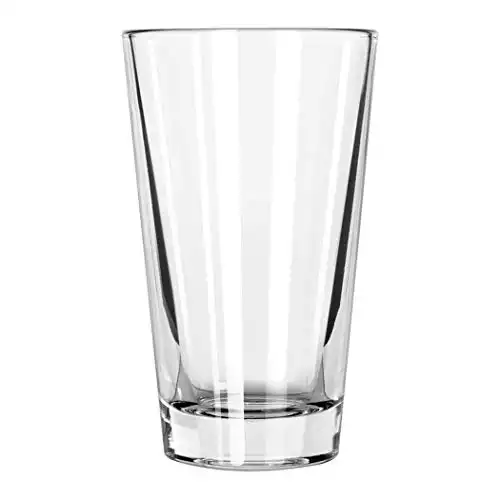There are many different types of
What is BPA-Free Plastic?
In terms of
As long as the plastic is NOT polycarbonate, it’s a safe bet it’s BPA-free.
Here are some examples of BPA-free
Shopping for BPA-Free Drinkware? Check the Label
Most BPA-free
This is a prime selling point. If ordering online, look for “BPA-free” in the product description of details. Again, this is something reputable sellers who know their products will highlight.
Not Labeled BPA-Free? Look at the Care Instructions
- Tritan and polycarbonate
plastic tableware products: These are the only clearplastic glasses that will be labeled both “Unbreakable” and “Dishwasher-Safe,” and sometimes “Shatterproof.” However, Tritan products also highlight BPA-free on the label, too, since being BPA-free is a major selling point for Tritan items.
- Acrylic
plastic tableware items: These are BPA-free and are also generally marked “Hand-wash,” or “Top-rack Dishwasher-safe.” Acrylic items are breakable, so they won’t (or shouldn’t) be labeled “Unbreakable,” but can labeled “Shatterproof.”
- SAN
plastic tableware items: These are BPA-free and typically also say “Dishwasher-safe” and “Break-resistant” on product labels. Though tougher than acrylic, SAN items are still breakable. So they won’t (or shouldn’t) be labeled “Unbreakable,” but can labeled “Shatterproof.”
- Melamine and polypropylene
plastic tableware items: Both of these plastics are BPA-free. Melamine is solid, not see-through and very rigid. Polypropylene is softer and more rubbery in feel and can be translucent or solid in appearance (think Tupperware). It’s easy to tell the difference between the two. These are often labeled “Unbreakable” and “Dishwasher-Safe,” and sometimes “Shatterproof.”
Here’s a closer look at the five BPA-free plastics commonly used to make
1. Tritan Plastic Glasses & Water Bottles are BPA-Free
Tritan plastic is the closest competitor to polycarbonate in terms of glass-like clarity and performance. Products made from Tritan plastic are every bit as durable, unbreakable, and dishwasher-safe as polycarbonate items — and deliver the added perk of being completely BPA-free.
Reliable Tritan drinkware brands include Michley, Cruvina, and others listed below, plus look for Pogo and Nalgene for BPA free water bottles.
Michley Red Wine Glasses Set of 4, 18 oz Unbreakable Tritan Plastic
2. Polypropylene Plastic Tableware is BPA-Free
Like Tritan, polypropylene plastic is – and always has been – BPA-free. Unlike Tritan and polycarbonate, polypropylene
Top BPA-free polypropylene plastic brands include US Acrylic, Preserve Everyday, CreativeWare, and of course, Tupperware.
Unbreakable Plastic Dinnerware Set by Shopwithgreen - Set for 4
Is Tupperware is BPA-free?
Most Tupperware plastic products are made from rubbery polypropylene, so those are BPA-free. However, Tupperware used various plastics over the years, so there may be some polycarbonate Tupperware items floating around.
3. Melamine Plastic Dishes are BPA-Free
Melamine plastic is another common BPA-free plastic generally used for dishes and dinnerware. Melamine
Ultra-durable melamine is the go-to plastic for many top plastic tableware brands.
Mauna Melamine Dinnerware by Gibson Home - Multicolor Set for 4
Vera Cruz Melamine Plastic Dishes by Certified - Set for 4
4. Acrylic and SAN Plastic Glasses are BPA-free
BPA-free Acrylic and SAN plastic products can closely resemble polycarbonate items, but there are differences. Goods made from these plastics generally aren’t as durable, so they’re rarely listed as unbreakable. SAN is dishwasher safe, but acrylic will generally be labeled hand wash only.
If in doubt, read the product details or look the item up online if shopping in-store. Online sellers like Amazon and other websites usually list the material that goods are made from. If it says acrylic, SAN, or styrene, the item is BPA-free.
There are several top acrylic and SAN brands available on Amazon, and US Acrylic leads the pack, and most of the collection is Made in the USA.
Optix 20-oz Plastic Glasses in SAN Plastic - Set of 8
Classic Clear Plastic Drinking Glasses | BPA-Free | Made in USA | Set 8
Splash Plastic Stackable Glasses |18 oz | BPA-free | Made in the USA
5. Eco-Friendly Plastics are BPA Free
Eco-friendly plastics are crafted from biodegradable “plastics” made from bamboo, corn, and even avocado pits. All of these bio-plastics are BPA-free, plus the manufacturers are very vocal about the makeup of their goods. So, you’ll definitely know if you stumble across these items in-store and online.
If biodegradable plastics sound intriguing, check out these innovative brands like Shopwithgreen and EKOBO.
- Sturdy, virtually unbreakable polypropylene plastic
- Dishwasher and microwave-safe plastic dishes
- Sharp, modern styling and colors
- Set includes coordinating mugs
- Great value price-wise
- Microwave reheat recommended limit of 120-degrees F
- Best for quick reheating, not longer cooking times
Another Option: Break-Resistant Glassware is BPA-Free
Glass is another BPA-free option, and many top glassware brands offer surprisingly durable drinking glasses, food storage containers, and barware. Learn more about tempered glassware and other break-resistant glass alternatives to plastic in our unbreakable glassware review.
Picardie by Duralex Tempered Tumblers, Set of 6, 12.62 oz. Made In France
Bormioli Rocco Tempered Stackable Glasses 16.25 oz, 6 Count (Pack of 1), Clear
Libbey Pint Glass with DuraTuff Rim, 16oz - Set of 4
Shopping for BPA-Free Glasses? Don’t Rely on Recycling Codes
Speaking of labels, there is a BPA-free symbol, but not every manufacturer prints it onto their packaging or products yet. What you can’t rely on is the recycling code. Many BPA-free
In fact, almost all non-disposable tableware plastics fall under the same catchall #7 recycling code, which simply means “Other.”
“Other” plastics aren’t disposable, so they’re not collected in most recycling programs. Even more confusing, recycling codes aren’t required for “Other” plastics. Many don’t carry a recycling mark at all. Knowing how to tell these plastics apart using these tips above ensures you can spot BPA-free options.
Here’s a quick look at why you can’t rely on plastic recycling codes to identify products with BPA.
Is BPA Really an Issue?
Some researchers claim that exposure to BPA may be harmful to humans, though the FDA lists it as safe for consumer use. Honestly, the science and facts about the effects of BPA could fill a lengthy article. But if you prefer to err on the side of caution, it’s easy to eliminate BPA from your home.
That’s a Wrap
I hope this review of the many BPA-free plastic alternatives helps you narrow down your shopping search. If you have any questions or BPA-free faves of your own, please share them in the comments below. Thanks for reading. Cheers! Krista
Polycarbonate vs. BPA Free Plastic Glasses
-
BPA Free Tritan vs. Polycarbonate: Closest Match
-
BPA Free Polypropylene vs Polycarbonate: Durable but More Casual
-
BPA Free Melamine vs. Polycarbonate: Nearly as Durable but not Glass-like
-
BPA Free Acrylic & SAN: Glass-Like Looks but not Unbreakable
-
BPA Free Eco-Plastics vs. Polycarbonate: Durable but not Glass-like
Overall Results for BPA Free Plastics vs. Polycarbonate
Tritan is the only BPA free plastic delivers the same performance and glass-like looks as polycarbonate. The other four BPA free contenders offer unique benefits but fall short in either glass-like looks or break-resistance. Overall, BPA free products score 4/5 compared to polycarbonate items. But when it comes to being BPA free — they all get 5 bright, shiny stars!

